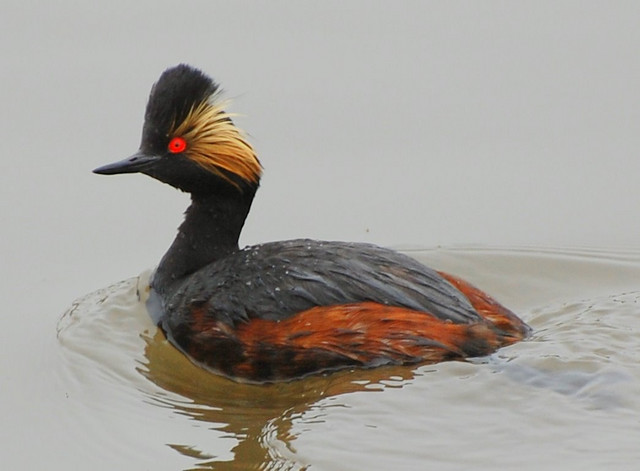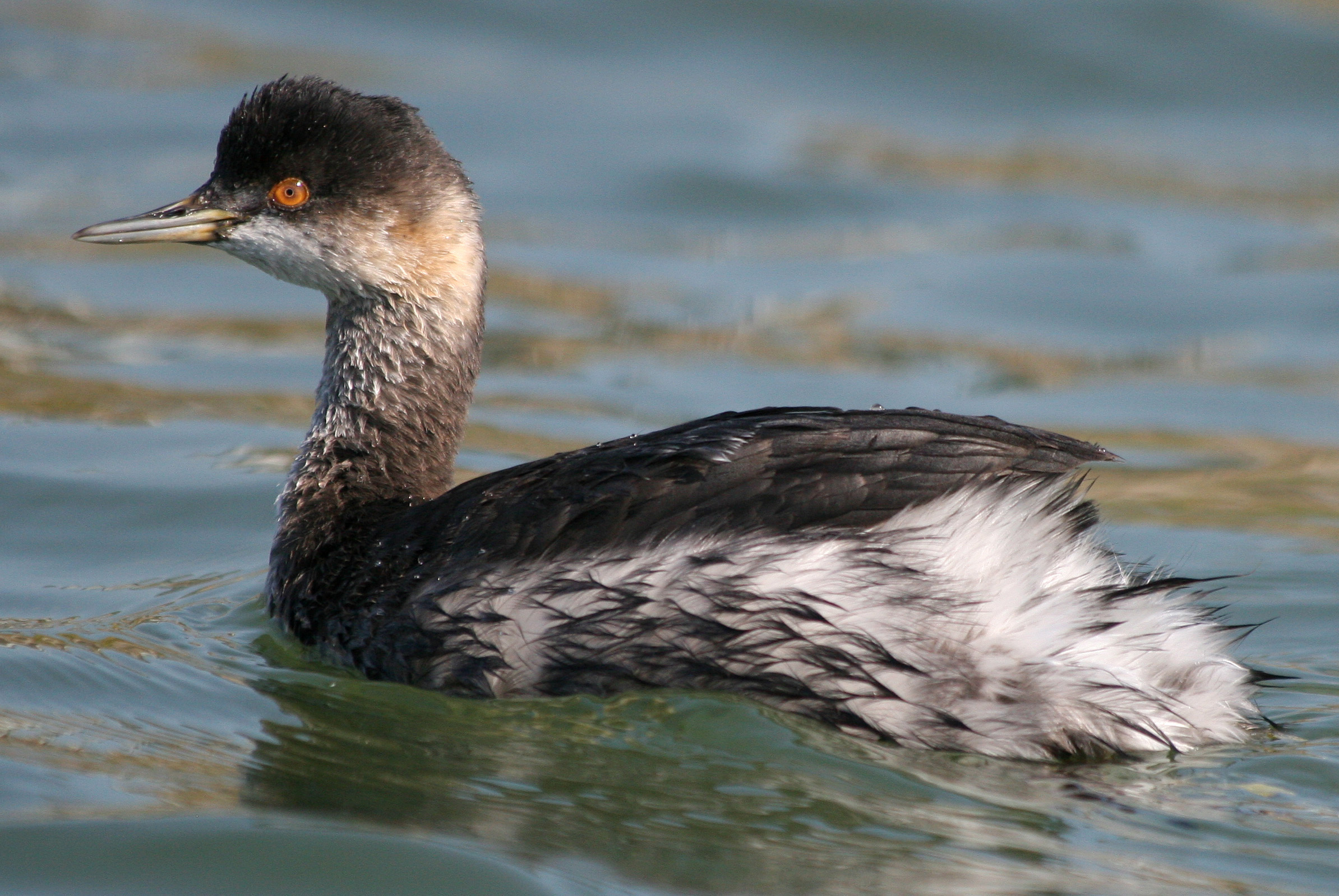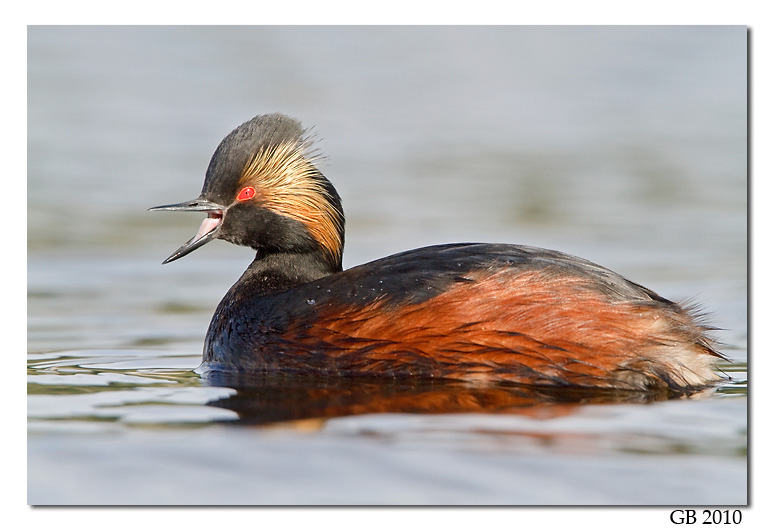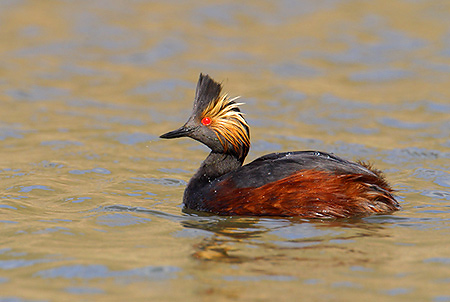
Podiceps nigricollis
TAXONOMY
Podiceps nigricollis, C. L. Brehm, 1831, Germany. Three subspecies.
OTHER COMMON NAMES
English: Black-necked grebe; French: Grиbe а cou noir; German:
Schwartzhalstaucher; Spanish: Zampullнn Cuellinegro.
PHYSICAL CHARACTERISTICS
11–13 in (28–34 cm); averages 0.7 lb (325 g) while breeding,
but may weigh over 1.3 lb (600 g) while staging. Females with
smaller bills than males. Adult breeding: back blackish, crested
head, neck and upper breast black with tuft of golden plumes
behind eye, sides chestnut, rest of underparts, and secondaries
white. Eyes bright red, bill black. Nonbreeding with less developed
crest, blackish crown reaching to below eye where grading
with white cheeks and throat, neck and sides gray;
immature similar, but more brownish, especially on neck;
striped pattern of head soon wearing off.
DISTRIBUTION
P. n. nigricollis: Europe and western Asia, in winter in southwestern
part of range; P. n. gurneyi: South Africa; P. n. californicus:
southwestern North America, in winter south to
Guatemala.
HABITAT
Small, shallow, eutrophic lakes with open water and scattered
patches of reed. Molts and winters on saline lakes and on
coasts.
BEHAVIOR
Gregarious. In small groups where breeding, in large flocks
when molting. In North America over two million stage on
just a few lakes.
FEEDING ECOLOGY AND DIET
Sometimes feeds in organized groups. Eats tiny arthropods,
only rarely fish.
REPRODUCTIVE BIOLOGY
Courtship display well developed. Monogamous, but nests
colonially, often far from shore, usually a few together but occasionally
up to 2,000 pairs in one colony, often in association
with marsh terns and smaller gulls, but away from coots and
other grebes. Usually single-brooded, eggs 2–4, incubation period
20–22 days.
CONSERVATION STATUS
Not threatened. The most numerous of all grebes, with a
world population exceeding 5 million birds, most occurring in
North America. Numbers fluctuate greatly and species at risk
while molting, when large parts of the population are concentrated
on just a few lakes in flightless condition.
SIGNIFICANCE TO HUMANS
None known.
Other popular Animals
Photo Gallery of - Eared grebe




 Animalia Life
Animalia Life